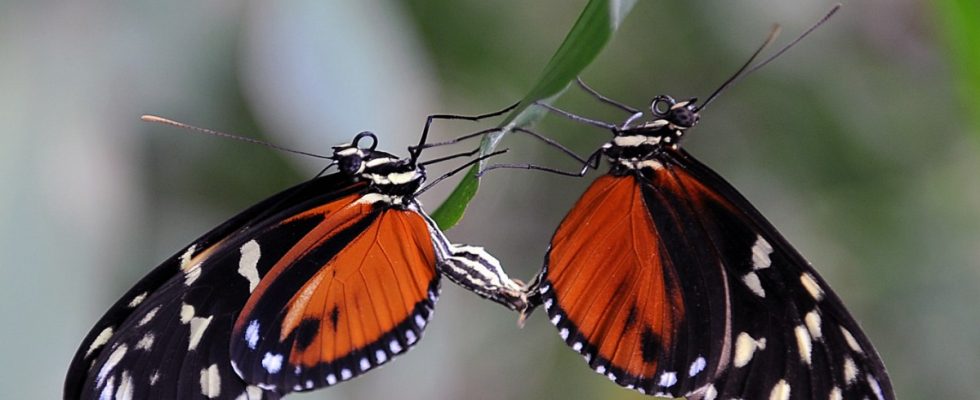Fraudsters and deceivers not only exist among humans, but also among animals and plants. Some orchids, for example, use their flowers to mimic the appearance of female bees in order to attract males and be pollinated by them. To make the illusion perfect, the plants also smell like a female bee. Males who fall for it and buzz drunk with love from one fake female to the next pollinate the orchids instead of producing their own offspring.
Butterflies in South America seem to have similarly perfected their scam. Like a team led by Edward Page from the University of York in the current issue of the science journal PNAS reported, Among other things, many species from the so-called Ithominii tribe not only imitate the appearance of Heliconius butterflies, but also their flight style.
The purpose of this deception is to avoid being eaten. Unlike the originals, which taste bitter, the imitators are actually a treat for many birds. However, they are not eaten. Birds that have once had one of the disgusting tasting originals in their beaks do not want to repeat the experience and avoid all butterflies that look and move similarly.
Mimicking not only the appearance but also the flight “seems to reinforce the ‘don’t eat me’ message,” Page said in a university press release. “We were surprised at how common this behavioral mimicry occurs.” Biologists refer to mimicry as imitations that result in the “counterfeiters” having an advantage because they are mistaken for someone else.
The fact that butterflies also change the way they fly to make the illusion perfect is astonishing. Flight behavior is influenced by many different factors: for example, whether the animals fly long distances and whether they tend to flutter around between plants or move in the open air. Changing the way you fly or even the shape of your wings can therefore have considerable disadvantages. But because anything is better than being eaten, it seems worth it.
The mimic octopus can imitate several poisonous animals at once
Although behavioral mimicry is less common than the imitation of external characteristics, it also occurs in other animal species. A particularly talented actor is the mimic octopus Thaumoctopus mimicus. The animal, which lives in the Pacific and Indian Oceans, can imitate several poisonous animals at once and thus deceive different enemies. Sometimes he gives a lionfish by spreading his arms just above the seabed and dragging them behind him. At other times he puts his arms close to his body and swims in wave-like movements like a flatfish. In this way he simulates a poisonous species of sole.
Another example of behavioral mimicry is ant spiders, which deceive spider-eating wasps by pretending to be defensive ants. To imitate the ants’ feelers, the spiders extend their front legs forward. They also imitate the jerky gait of their role models, which makes the illusion perfect.
Even ants fall for it: the crab spider Amyciaea forticeps For example, camouflaged in this way, weaver ants wait. When one comes by, the first thing it does is bite the animal’s head to paralyze it. She can then eat the ant in peace.

